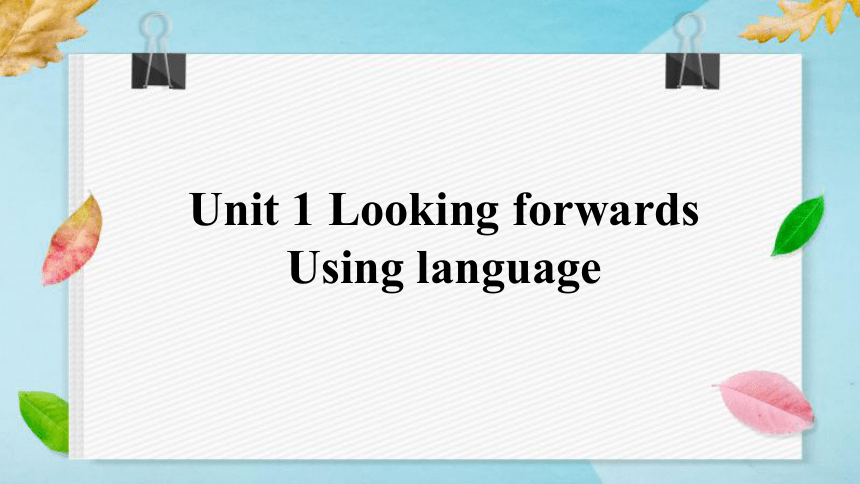(
课件网) Unit 1 Looking forwards Using language To review, consolidate and flexibly use the common tenses of verbs in the actual context. To learn and master the expression of "Choices and decisions", and be able to use it flexibly in real life. To learn how to politely ask questions and explain reasons, and be able to learn relevant expressions in real life. Learning objectives Unit 1 * admission n. 允许进入(加入) 6 make up one’s mind 做出决定,拿定主意 6 pass up 放过,放弃,错过(机会) 6 have second thoughts (对原先的决定)犹豫,产生怀疑 6 put off 推迟……, 使……延期 6 reject ... out of hand 坚决拒绝……; 彻底否决…… 6 weigh up 仔细考虑,权衡 6 participation n. 参加,参与 7 Words and expressions Review: tenses 复习:时态 Look at the sentences from the reading passage. Decide which tense each is in and match the tenses to what they describe. 1 a For many of us, it’s something we already have experienced. b What will we be being doing in ten year’s time c He would later go on to win the Nobel Prize in Literature. d ...the young Arthur Conan Doyle, born in Scotland in 1859, had originally worked as a doctor. e ...Doyle wrote some of his early Holmes stories while he was waiting for patients in his medical practice in London. f ... but Sherlock Holmes has been entertaining readers for well over a century. 1 An action completed in the past before another past action. 2 An action or event taking place over a particular period in the future. 3 An action that happened in a period of time up to the present. 4 An action that started in the past and may still be going on or have just stopped. 5 An intended future action or event as seen from the past. 6 An on-going situation at or around a particular time in the past. a b c d e f 现在完成时 将来进行时 过去将来时 过去完成时 过去进行时 现在完成进行时 1. One moment, we are lying comfortably in ... a deep sleep. 2. The next, our eyes are open and we find ourselves ... our lives -- the future. 3. Although they shared the same ambitious ..., their careers unfolded in contrasting ways. 4 So you have to trust that the dots will somehow connect in your future. 现在进行时 一般现在时 一般过去时 一般将来时 Now answer the questions. 1 What other tenses have you learnt Find examples in the reading passage. Look at the sentences from the reading passage. Decide which tense each is in and match the tenses to what they describe. 1 1. Present continuous tense: A verb form indicating an ongoing or developing action or event. 2. Simple present tense: An action or state that indicates a constant, habitual, or universal truth. 3. Past simple tense: A tense in English that indicates an action, state, or habit that occurred in the past. 4 Simple future tense: indicates an action or state that will occur at some time in the future, usually using will or shall plus the verb form. 现在进行时 一般现在时 一般过去时 一般将来时 Now answer the questions. 2 What do these te ... ...

